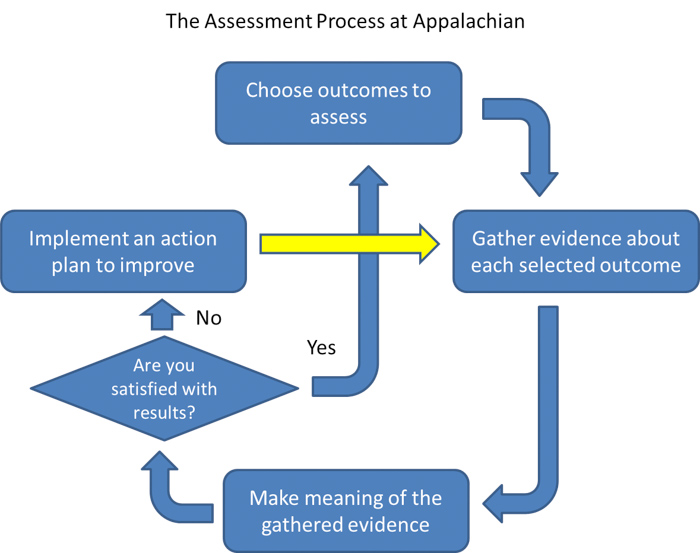One might make the case that closing the loop is the most important part of the assessment process. Closing the loop in assessment happens when a program makes changes in response to a criterion that has not been met and then measures the outcome again to see if the changes had any impact on meeting the criterion. In a program's assessment report in Xitracs, the program is asked to indicate whether this is a close the loop example. This means to indicate whether or not this outcome was measured again after implementing an action plan from a previous cycle. The yellow line in the figure below represents closing the loop.

What are some examples of closing the loop?
In the last report to SACSCOC, Appalachian provided several examples of closing the loop from each college. The table of examples can be found here (PDF, 86 KB).
Where can I find examples for my discipline of closing the loop?
A simple internet search would probably provide many examples of closing the loop in any discipline. Or, contact colleagues at other institutions in your discipline to ask them to share their assessment reports. There are also numerous conferences on assessment where people present examples of successful assessment efforts.